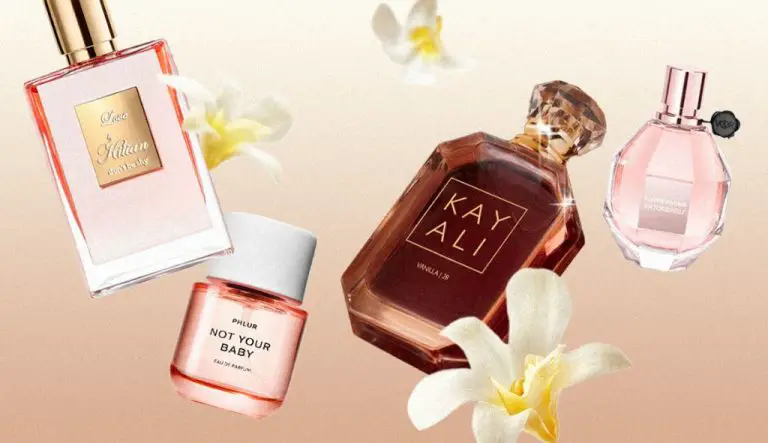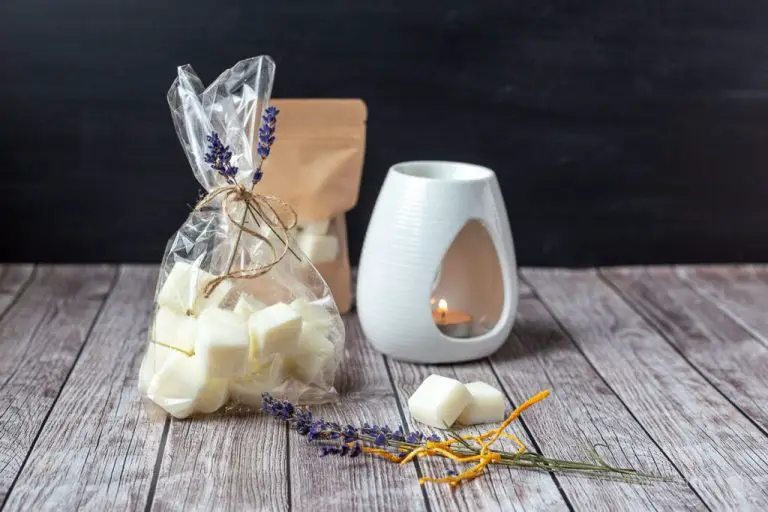What Is 100% Natural Fragrance?
What is 100% Natural Fragrance?
100% natural fragrances are made entirely from plant-based ingredients like essential oils, absolutes, resins, and concretes. They do not contain any synthetic ingredients or artificial chemicals 1. Natural fragrances originate from botanical sources like flowers, fruits, seeds, leaves, roots, and wood, whereas synthetic fragrances are chemically engineered in a lab.
The key difference between natural and synthetic fragrances is the origin and process used to obtain the fragrant compounds. Natural fragrances are extracted from plants using methods like steam distillation, solvent extraction, expression, and enfleurage. Synthetic fragrances are created artificially by combining individual aroma chemicals in the laboratory according to a formula.
Natural fragrances offer the true-to-life scents of plants and botanicals. They provide complexity and nuance not easily replicated synthetically. However, natural fragrances can have variations between batches and seasons. They also tend to be more expensive than synthetic fragrances. Overall, natural fragrances appeal to consumers seeking authenticity and sustainability.
Sources of Natural Fragrances
There are several main sources that natural fragrances are derived from:
Essential Oils
Essential oils are aromatic compounds extracted from plants, including trees, flowers, fruits, seeds, leaves, and roots. Popular essential oils used in fragrances include lavender, eucalyptus, tea tree, rose, jasmine, and citrus oils like lemon and orange (Sharmeen, 2021).
Absolutes
Absolutes are concentrated plant essences obtained through solvent extraction. Common absolutes used in fragrance include rose, jasmine, tuberose, lavender, sage, and oakmoss.
CO2 Extracts
CO2 extraction uses carbon dioxide under high pressure to extract fragrant compounds from plants. This method is used to produce gentle, pure extracts from delicate plants and flowers.
Natural Isolates
Certain molecules that contribute aroma can be isolated from natural sources through physical methods. These natural isolates, such as linalool from lavender, are used to enhance natural fragrance compositions.
Benefits of Natural Fragrances
Natural fragrances offer several benefits compared to synthetic fragrances:
They are free of synthetic chemicals. Natural fragrances are derived from plant sources like flowers, fruits, seeds, bark, resin, and herbs. This means they do not contain any synthetic components created in a lab.
They are often hypoallergenic. Many people suffer from allergies or sensitivities to certain synthetic fragrance chemicals. Using natural fragrances reduces this risk because plant extracts rarely cause allergic reactions.
They are derived from plants. Ingredients like essential oils and absolutes come directly from botanical sources through methods like distillation, expression, solvent extraction, resin tapping, and enfleurage. This gives natural fragrances a more authentic connection to plants.
According to Natural Niche Perfume, natural fragrances have significant healing properties, are non-toxic, safe, hypoallergenic, eco-friendly, and can help repel insects.
Challenges of Formulating with Naturals
Using natural fragrances in formulations comes with some unique challenges compared to synthetic fragrances. Three main challenges are cost, supply chain reliability, and stability.
Natural fragrances tend to be much more expensive than synthetic versions. According to this source, natural fragrances can cost 10-20 times more than synthetics. The higher cost comes from needing far more raw natural material to extract a small amount of essence. For example, it takes 1000 kg of roses to produce 1 kg of rose oil.
Relying on natural agriculture also introduces supply chain issues. Crop yields can vary year-to-year based on weather, pests, and other factors. Geopolitical instability in parts of the world that grow key crops, like jasmine, also threaten consistent supply. Formulators need to account for these risks when working with naturals.
Finally, natural fragrances tend to be less stable compared to synthetics. Exposure to heat, light, oxygen, and other factors can cause natural fragrances to degrade or lose potency faster. Fragrance chemists need to account for the chemical makeup of naturals when designing stable end products.
Natural vs Synthetic Fragrance
Natural and synthetic fragrances have some key differences in how they are sourced and produced. Natural fragrances contain ingredients derived directly from plants, animals, or minerals. They are extracted from natural materials like flowers, fruits, woods, resins, and essential oils through methods like distillation, expression, solvent extraction, and enfleurage 1. Synthetic fragrances, on the other hand, are chemically engineered in laboratories. They are formulated from synthetic aroma chemicals to mimic or enhance natural scents.
Some of the pros for natural fragrances are that they are derived from renewable resources and tend to have less reported cases of skin irritation or allergies. However, natural fragrances are often more expensive and less stable, with the composition varying based on environmental factors. Synthetic fragrances are typically more affordable, consistent, and long-lasting. But some synthetic ingredients have been linked to sensitization, headaches, and other side effects in sensitive individuals 2.
In the end, both natural and synthetic ingredients have their place in fragrance formulation. Many modern perfumes use a smart blend of natural and synthetic notes to balance cost, stability, and skin compatibility.
Common Natural Fragrance Ingredients
Some of the most commonly used natural fragrance ingredients include:
Lavender Oil
Lavender oil is extracted from the flowers of the lavender plant (Lavandula angustifolia). It has a light, fresh, floral scent. Lavender oil is believed to have relaxation and anti-anxiety properties. It is one of the most popular essential oils used in aromatherapy.https://www.fragrancex.com/blog/perfume-ingredients/
Rose Oil
Rose oil, also known as rose otto or attar of rose, is extracted from rose petals, most commonly the damask rose (Rosa damascena). It has a rich, floral scent with hints of honey and citrus. Rose oil is one of the most expensive essential oils due to the large quantity of petals needed to produce a small amount of oil. It is prized in perfumery for its complex aroma.https://nyc.ph/blogs/inspiration/the-chemistry-of-natural-perfume-ingredients-from-plants-to-extracts-and-natural-synthetics

Bergamot Oil
Bergamot oil comes from the rind of the bergamot orange fruit (Citrus bergamia). It has a bright, citrusy scent with spicy floral undertones. Bergamot is a popular top note and gives the distinctive smell to many classic colognes. It is also used to flavor Earl Grey tea.https://www.fragrancex.com/blog/perfume-ingredients/
Jasmine Oil
Jasmine oil is extracted from the flowers of jasmine plants, most commonly Jasminum officinale. It has an intense, sweet, floral aroma with hints of honey. Jasmine is considered one of the most precious oils in perfumery and commands a high price. It is used sparingly and is often blended with synthetic recreations.https://www.alphaaromatics.com/blog/natural-fragrances/
Sandalwood Oil
Sandalwood oil comes from the heartwood of sandalwood trees (Santalum album). It has a rich, woody, balsamic scent. Sandalwood oil is widely used in perfumes, cosmetics and aromatherapy. It is prized for its ability to enhance other fragrances while also providing distinct aromatic properties.https://www.fragrancex.com/blog/perfume-ingredients/
Regulations for Natural Fragrances
There are some guidelines and regulations around the use of “natural” claims for fragrances, but no federal law specifically regulating natural fragrances.
The FTC provides guidance on “natural” claims, stating they should only be used if the product is made up of ingredients that come from nature and have not been fundamentally altered from their natural state. However, the FTC does not define “natural” and has not created a formal definition. The FTC looks at natural claims on a case-by-case basis.
Some organizations like the Natural Products Association offer certification programs for natural personal care products, including fragrances. To be certified, fragrances must meet criteria such as:
- Containing 95% natural ingredients
- Free of specific excluded ingredients like parabens
- Free of synthetic fragrances
Organic certifications like USDA Organic also regulate the use of “natural” claims. USDA Organic fragrances must contain 95-100% organic content.
While these provide guidelines, there is no one official regulatory body that provides definitive regulations for natural fragrances.
How to Select Natural Fragrances
When selecting a natural fragrance, it’s important to look closely at the product labels and ingredients list. Here are some tips on what to look for:
The words “natural fragrance” or “100% natural fragrance” should appear prominently on the label. Be wary of vague terms like “botanical fragrance” or “plant-based fragrance” as these could contain synthetic ingredients.
Scan the ingredients list for any chemical-sounding ingredients. Natural fragrances should primarily contain plant extracts, essential oils, absolutes, tinctures, and natural isolates. Watch out for ingredients like phthalates, parabens, petrochemicals, and synthetic musks.1
Look for third-party certifications like USDA Organic, NPA, or ECOCERT. These assure the fragrance contains 95-100% natural ingredients and adheres to certain purity standards.
When speaking to suppliers, ask questions like:
- What percentage of your fragrance is derived from natural ingredients?
- Do you use any synthetic ingredients as bases, stabilizers, or preservatives?
- Can you provide a full list of ingredients and their origins?
- How do you source and extract your natural ingredients?
- Do you have any sustainability certifications for your natural ingredients and processes?
Reputable natural fragrance suppliers will be transparent about their sourcing and willing to answer any questions you may have. Taking the time to vet suppliers will ensure you get a truly natural product.
Natural Fragrance Applications
Natural fragrances are increasingly being used in a variety of products, including:
Personal care products – Natural fragrances are commonly found in natural skincare, haircare, perfumes, and cosmetics. Many consumers find natural fragrances to be gentler, less irritating, and better for sensitive skin compared to synthetic fragrances. Key applications include body lotions, facial serums, shampoos, and natural perfumes.
Household cleaning products – Natural essential oil fragrances are used to naturally scent all-purpose cleaners, laundry detergents, dish soaps, and other household products. Popular natural fragrances for cleaning include lemon, lavender, eucalyptus, and tea tree. Natural fragrances allow cleaning products to smell fresh and pleasant without harsh synthetic chemicals.
Candles – Soy, vegetable, and beeswax candles frequently incorporate natural essential oil fragrances like cedarwood, sandalwood, jasmine, vanilla, sweet orange, and more. Natural fragrances enable candle makers to craft botanical scents that are less irritating when burned compared to synthetic paraffin candles.
Future of Natural Fragrances
The natural fragrance market is poised for strong growth in the coming years. According to a report by Market Research Future, the global natural fragrances market is projected to grow at a CAGR of 7.5% from 2022 to 2030, reaching a value of $48.3 billion by 2030.
Several factors are driving this growth:
Consumer demand for natural and organic personal care products continues to rise. Consumers are becoming more aware of potential health risks from synthetic fragrance ingredients and are seeking natural alternatives. This trend is expected to further propel the natural fragrances market.
Advancements in extraction methods and new natural ingredient discoveries are enabling more effective and stable natural fragrances. This is making natural fragrances more viable and cost-effective for product formulators.
The clean beauty movement emphasizes using natural, sustainably sourced ingredients in beauty and personal care products. As this trend gains traction, demand for natural fragrances will also increase.
Regulations are also favoring natural fragrances. For example, the EU Cosmetics Regulation prohibits many synthetic fragrance ingredients and encourages natural alternatives.
Innovation opportunities exist in areas such as upcycling ingredients from food and agricultural waste, biotechnology to create novel natural ingredients, and green chemistry principles to develop safer synthetics that complement naturals.
Consumer demand for experiential fragrances is rising. Natural fragrances allow more authentic botanical experiences. Brands will need creative natural fragrance blends to meet consumers’ expectations.
Personalization and customization are also key trends. Natural fragrance palettes with bold, distinctive notes enable consumers to craft personalized scents aligned with their preferences.
Sustainability matters more than ever to consumers. Natural fragrances derived from renewable resources and produced using green chemistry have an advantage.
The future looks bright for natural fragrances as consumer demand drives innovation and growth opportunities in this emerging market.




